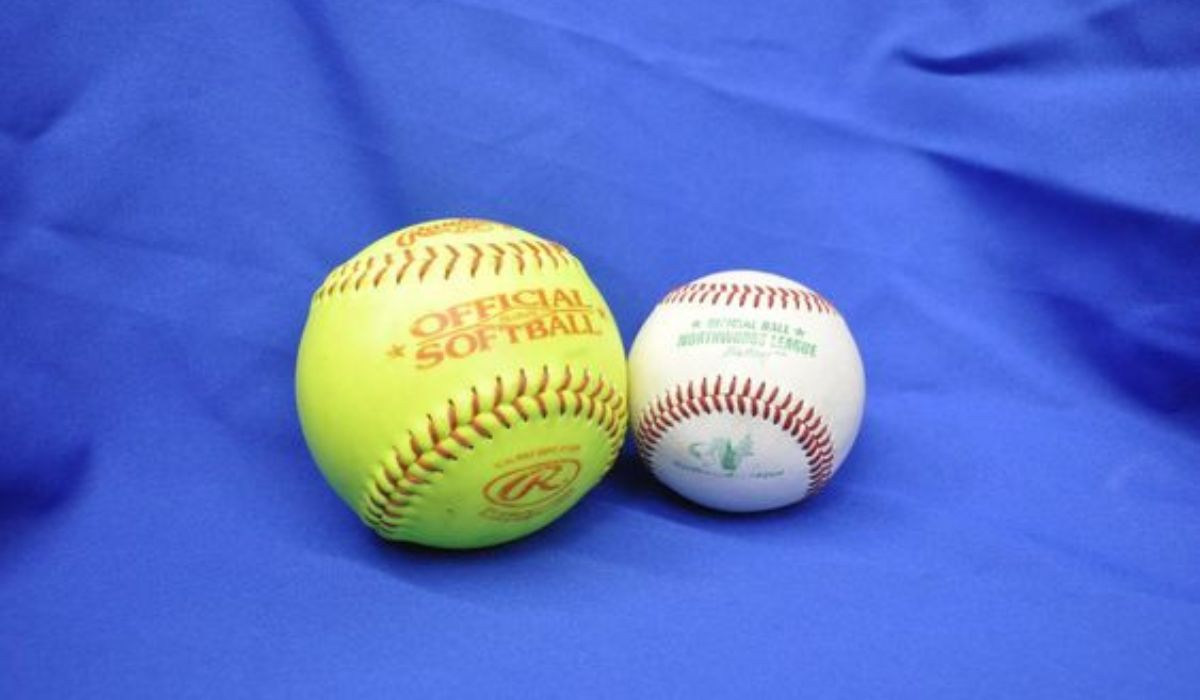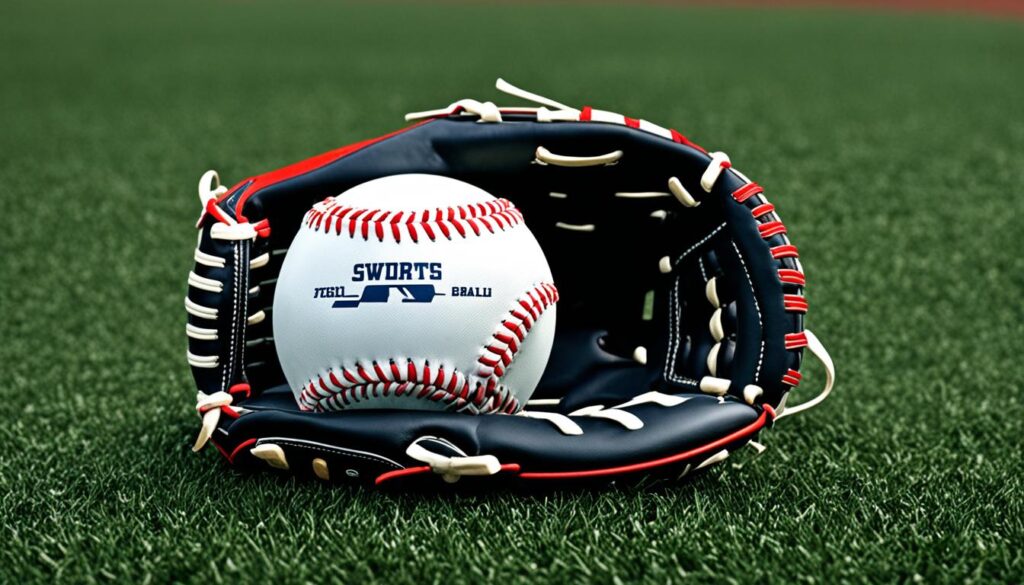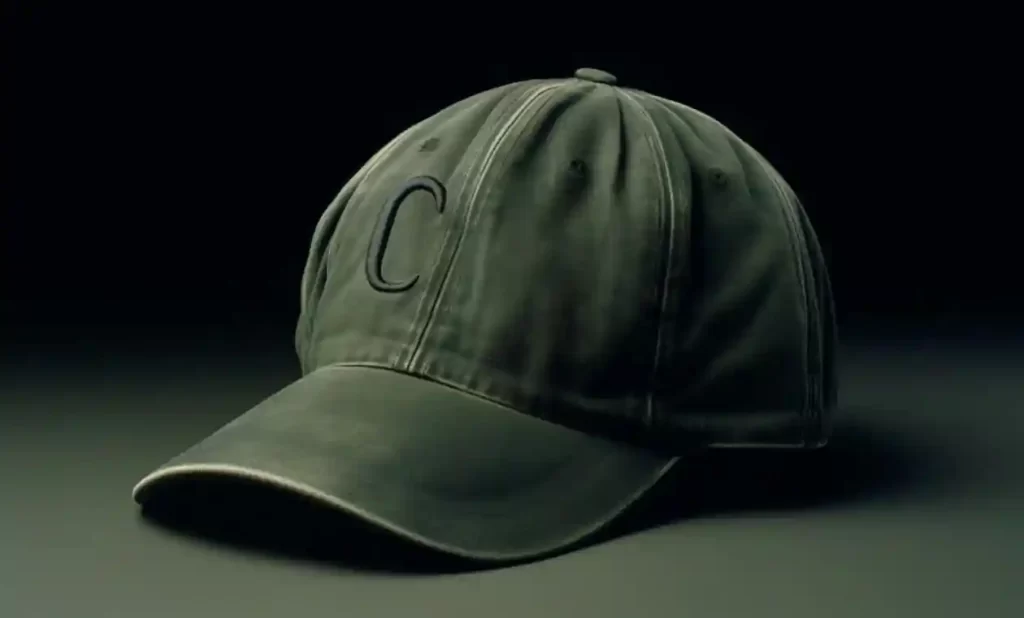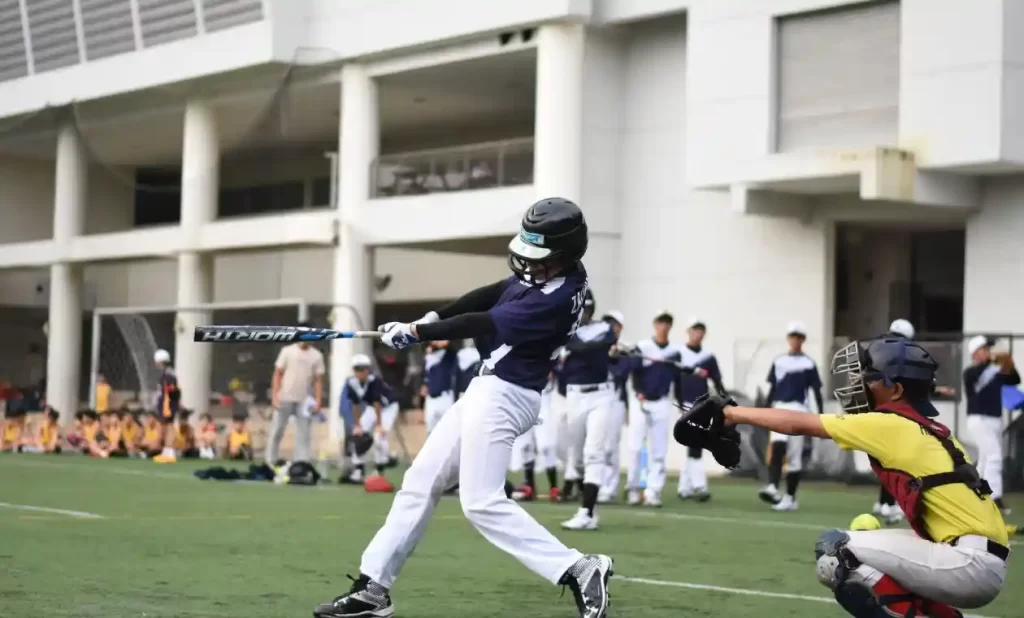
Baseball and softball are popular sports loved by many worldwide. If you’ve ever played catch or cheered on a team, you know the excitement they bring. The sound of a bat hitting a ball or a great play can’t be beat.
However, baseball and softball are not exactly alike. They have different rules and ways of playing. Knowing these differences makes watching or playing the sports more fun.
Imagine it’s a sunny day and you’re at a sports complex. Walking towards the baseball diamond, you smell fresh grass. The field is large, with green bases set far apart. Players in their team jerseys get ready to play.
Close by, a softball game is starting on a smaller field. The bases are nearer and yellow softballs wait for the game to start. The team gathers, some wearing face masks, in their matching outfits.
These scenes show the exciting worlds of baseball and softball. Each sport has its own rules and features. Now, let’s explore what makes them different and special:
Key Takeaways:
- Baseball and softball have distinct differences in terms of field dimensions, game length, and pitching styles.
- Baseball fields are larger, with base paths measuring 90 feet long, while softball fields have smaller dimensions, with base paths measuring 60 feet long.
- Baseball games consist of nine innings, while softball games are played for seven innings.
- In baseball, pitchers throw overhand from a raised mound, while softball pitchers throw underhand from a flat mound.
- Baseball and softball use similar equipment like bats and balls, but there are differences in their design and size.
Field Dimensions and Game Length
Baseball and softball differ mainly in field size. Baseball fields are much bigger. They have 90-foot base paths and massive outfield fences. These fences are about 330 feet along the foul lines and 400 feet to the center. Softball fields are smaller. Their base paths are 60 feet, and their outfield fences are around 190 feet on the lines and 220 feet to the center.
Game length is another big difference. Baseball games last nine innings, making them longer. On the other hand, softball games end after seven innings. This makes them a bit shorter than baseball games.
The size of the fields and length of the games affect the game experiences. Baseball’s big field allows for longer throws and harder outfield plays. Softball, with its smaller field, means quicker, more agile games.
Pitching Styles
In baseball and softball, pitching styles vary a lot. Baseball pitchers throw overhand from an 18-foot diameter mound that’s 10 inches high. Softball pitchers throw underhand from a 43-foot distance. It makes a big difference in the game.

Baseball pitchers can throw harder because of their overhand style. They use a raised mound for more power. They need to be very accurate to trick the batter.
“Pitching overhand in baseball gives pitchers the advantage of throwing fastballs, curveballs, and sliders with varying speeds and movements,” says John Thompson, a baseball coach with over 20 years of experience.
In softball, pitchers use an underhand style. This is called the “windmill.” The shorter distance to the batter makes it harder for them. They can surprise the batter with hidden pitches.
“Softball pitchers like me can control the ball’s path more easily. I used rise balls, drop balls, changeups, and more,” said Sarah Johnson, a former college player.
Impact on the Game
Their different styles have a big impact on the game. In baseball, high speeds need quick reflexes from the batter. Swift reactions, timing, and great coordination are key.
Softball’s windmill pitch allows more time for batters to see the ball. But, tricky ball movements by the pitcher can still be challenging for the batter.
Equipment Differences
Baseball and softball both need bats, balls, and gloves. Yet, they differ in design to suit each sport’s needs.
Softball uses larger balls, 12 inches wide, compared to baseball’s 9-inch balls. This changes how the games are played, from pitching to hitting.
Softball bats are shorter and lighter than baseball bats. They help players swing faster and with more precision. But, baseball bats are made for hitting far and hard.
Gloves between the games also vary. Softball gloves are bigger, fitting the larger ball better. This helps players catch and field easily. Baseball gloves, however, are smaller for faster hand movements needed in their game.
These differences in equipment show how each sport has its unique features. They meet the special needs of baseball and softball players.

Fielding Face Masks and Playing Surfaces
In softball, face masks are common for pitchers and infielders. This is because they play closer to the batter. In baseball, this extra layer of protection is not as widespread.
“I always wear a face mask when I’m pitching. It gives me peace of mind and allows me to focus on my game without worrying about getting hit by a line drive.” – Emily Smith, Softball Pitcher
Softball fields are different from baseball fields. They feature a “skinned diamond.” That means the infield is all dirt. This makes the game unique, as baseball fields sport a grass infield.
How the playing surface affects the game:
In softball, ground balls behave differently on the dirt infield. Bounces are lower and the ball moves faster. Infielders must react quickly to make plays.
Baseball fields, because of their grass infields, slow down ground balls. This change up demands different strategies from baseball players. They must be precise in their movements.
Face masks in softball and the distinct playing fields make each sport special. Face masks guard against fast balls in softball. Meanwhile, the field differences challenge players to fine-tune their playing styles.
Base Running and Leading Off
Base running is key in baseball and softball. But, there are distinct rules for each sport. In baseball, players can step off their base before the ball is pitched. This allows them a jump start, aiming to reach the next base sooner.
In softball, things are done differently. Here, players need to stay on their base until the pitcher lets the ball go. They can’t start running early. This means they have to be quick and smart to move between bases. It adds a layer of challenge, making their run more tactical.
No matter the sport, sprinting off or strategizing to move on pitch is thrilling. It’s vital for teams. Running intelligently to gain extra bases or steal a base is part of winning strategies in baseball or softball.
Youth Baseball and Softball Differences
Youth baseball and softball are each unique. Young players grow their skills while facing different field sizes. They start with smaller fields in baseball. As they progress, the fields get bigger until they reach the full size.
Softball players follow a similar, yet distinct, path. They begin with a smaller softball size. Then, they work their way up to using the regulation size. This method helps players adjust to the game’s needs. It makes sure they can confidently use their gear while honing their abilities.
Conclusion
In conclusion, baseball and softball have many differences that make them unique. These include things like field size, pitching style, and even the length of the games. Because of these differences, each sport offers its own special experience to players and fans.
Both sports use bats, balls, and gloves. But, baseball is played in a bigger field with overhand pitching. This is done from a raised mound. On the other hand, softball uses a smaller field and underhand pitching from a flat mound.
Despite their differences, both games are fun and competitive. Baseball is great for those who love excitement and action. Softball, on the other hand, is perfect for fans of strategy. Both sports give players a chance to shine and keep fans hooked. Whether you love baseball or softball, they both bring happiness and fun to the world of sports.
Recommended
- BASEBALL FLOW HAIRCUT: TRENDY STYLES FOR ATHLETES
- WHY ARE BASEBALL BATS SO EXPENSIVE? UNRAVELING COST

Meet Daniel Anderson, the heart and soul behind Baseball Pro Picks. At 49, Daniel’s life has revolved around baseball, a passion that’s as strong today as it was when he first fell in love with the game. Living in the USA, Daniel has dedicated countless hours to watching, analyzing, and understanding every pitch, hit, and home run, making almost no game missed. His deep-rooted love for the sport is matched only by his commitment to sharing insightful, expert analysis with fellow baseball enthusiasts. With decades of experience and a keen eye for the game’s nuances, Daniel brings a unique perspective that enriches Baseball Pro Picks. Trust Daniel to guide you through the intricacies of baseball with the authority and trustworthiness of a true aficionado.












